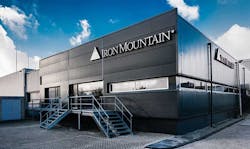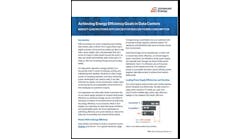State of the European Data Center Market in 2022
With surging demand, data center investment in Europe is reaching record highs. According to Grand View Research, the European Data Center colocation market was valued at USD 12.81 billion in 2020 and is expected to expand at a compound annual growth rate of 13.1 percent from 2021 to 2028 to reach USD 33.66 billion by 2028.
More Investment in Top Data Center Markets in Europe
The top data center markets continue to be the FLAP regions (Frankfurt, London, Amsterdam and Paris), where the vast majority of the demand is requested. In FLAP, Frankfurt is currently the number one data center market looking at growth.
Demand is exploding and continues to grow. There has been an influx of global capital investment in large markets like Frankfurt and London. Much of the demand comes from hyperscale data center consumers such as large cloud providers and internet businesses, but we’re also seeing increasing demand from the enterprise segment.
Lots of data center capacity is being pre-sold, and scarcity of supply is Frankfurt’s biggest challenge. Any data center provider can sell any megawatt of capacity that they have available in Frankfurt. Of course, this influences pricing as huge demand is currently coupled with delayed new capacity due to the current world situation which has led to rising prices.
While growth in the Amsterdam data center market was a little bit slower in the first half of 2021, it picked up quickly in the second half of 2021. The London data center market is also doing very well, with healthy demand from hyperscalers and cloud providers. Paris wasn’t the most active market for many years but started growing again last year. We’ll see a lot of new capacity come online there in 2023.
Growth and Investment in Secondary Markets
The FLAP markets have matured and face space and power limitations. These top markets are getting crowded and competitive. In 2022, capital infusion will extend to second-tier cities and edge markets like Warsaw, Milan, Zurich, Berlin and Madrid. In the UK, Manchester and Wales are growing as secondary hubs.
Bring Your Own Power
Dublin also continues to grow as a data center market. While it’s difficult to build in Dublin due to limited power, developers are looking at alternative sources of energy and even building their own electricity supply onsite.
This trend to “bring your own power” will grow in 2022, as the intersection of data center energy enters a new phase. With growing government demand across Europe for alternative energy, more data center developers are looking to develop their own energy sources.
Many data center operators are considering the development of microgrids, which offer access to diverse energy sources, including the utility grid, generators, solar and wind energy and energy storage. Microgrids allow data centers to operate independently of the grid when necessary and can integrate renewable energy sources, which can reduce carbon emissions
Edge Computing
Another driver for the growing secondary markets in EMEA is increasing demand for high-capacity networks with the emergence of edge computing solutions. Technologies such as autonomous vehicles, IoT, machine learning and artificial intelligence have created more demand for edge computing solutions as end-users clamor for seamless on-demand experiences.
The market for smaller facilities that are closer to the consumer is growing, but the expansion of this market will be driven by customer demand. At Iron Mountain Data Centers, we are developing an edge product to be ready to meet that demand with our facilities in more than 50 countries globally.
Liquid Cooling in the Data Center
2022 may be the year that liquid cooling sees broader adoption, especially in edge deployments. Edge data centers are often located in urban areas where contaminants can fill the air. Liquid cooling architecture may emerge as a solution.
Progress in liquid cooling technology, including powerful new hardware for AI workloads, has made it a more attractive option. Microsoft recently began using immersion-cooled servers in production, and several multi-tenant data center providers are preparing for broader use of liquid cooling.
Challenges in the European Data Center Market
Although the data center industry in Europe has seen record growth and advancements, we have our share of challenges. The biggest challenge we face is sourcing enough power, which can be difficult in some locations. The next challenge is power pricing. Europe is battling a record-breaking surge in energy prices, and this is affecting everyone. A combination of market, geographic and political factors have created a perfect storm that has caused prices to rise dramatically.
A recent report by Uptime Institute predicts that in 2022 some major data center operators will support nuclear power more actively and openly, even pressuring governments and utilities to invest in this option. Data center operators may also buy nuclear power, where it is available, as a carbon-friendly alternative to 100 percent renewable energy. While nuclear power is not classified as clean, it is a near-zero carbon energy source.
Supply Chain Challenges
COVID continues to affect the world economy and every industry is facing supply chain challenges. The data center industry is no different. We’re facing delays in building materials, as well as labor. IT equipment, such as the chips you need for a laptop, are also in short supply. This has made delivering capacity on time a challenge.
Data Center Perception
Stringent regulations in Europe and regional diversity are additional challenges to the data center market. As the data center industry expands into more regions, we see big differences within Europe in how the data center industry is perceived. Some governments are actively working with data center providers. They are at trade shows promoting their regions as a good fit for the data center market.
And then there are other regions where data centers are still trying to gain an understanding for their vital role in the digital economy. Even today, many don’t fully understand the function of a data center for our society and the work we create as an industry along with it.
People sometimes forget that we all use data in business and our personal lives – and that data must go somewhere. As an industry, we still have work to do educating government and local officials on the important role that data centers play. We are active in many organizations. I’m on the board of the Dutch Data Center Association and the policy committee of the European Data Center Association. We’re also active in TechUK and on the Board of the German Data Center Association, and this is a key part of the work we do. It’s important to work together as data center providers to help educate and create awareness in the right way in society.
Sustainability
When it comes to educating and awareness, sustainability continues to be a key focus in the data center industry in Europe. The European Commission’s paper “Shaping Europe’s Digital Future” states that data centers must be carbon-neutral by 2030. To meet that goal, data centers must become more energy-efficient, utilize waste energy such as heat, and employ more renewable energy sources.
Many of Europe’s major data center operators, including Iron Mountain Data Centers, signed the Climate Neutral Data Centre Pact, initiated by EUDCA, pledging to self-regulate before European Union officials approve data center sustainability legislation. The pact details efficiency and renewable energy goals for data centers and the targets for achieving them.
Like Iron Mountain Data Centers, most data center providers in Europe already use sustainable energy sources for their data center’s energy. Data center operators are some of the biggest buyers of renewable energy, and the industry has made enormous strides in overall energy efficiency in the last decade.
That said, we are seeing a continued push toward sustainability, with more investment in new renewable energy technologies. According to Mordor Intelligence, technological innovations in data center technology and new developments in design have enabled data centers to cut down on emissions and decrease power consumption by almost 80%. These kinds of numbers have led to more investment in greener technologies and infrastructure.
Wind and solar are the top renewable energy sources at present, and there is work being done with hydropower and other forms of renewable energy, but more testing needs to be done.
Outlook is Bright
There is no doubt that Europe is seeing a data center boom, and we look forward to the year ahead. The challenge will be to satisfy demand and ensure customers have the capacity where and when they need it.
Eric Boonstra, Vice President & General Manager of Iron Mountain Data Centers Europe.





